MUSIC ACADEMY OF THE WEST
is a prestigious music conservatory tucked away in the hills above the ocean just east of downtown Santa Barbara. Take Cabrillo Blvd to Channel Drive and turn off on Fairway Drive. There will be signs guiding you. Watch out for the one way streets. Not many tourists ever visit this academy (as it is a private campus). The campus is quite secluded and automatic gates are at the entrance and exit.
Whenever we have visited the academy the gate at the entrance has been open. The gate at the exit has always been closed, but all you have to do is drive up to it and it will automatically open for you. There is very limited parking in a small lot in front of the main building. Behind the main building are fountains and small paths that overlook parts of the ocean. One time before we visited this academy, we had observed a wedding ending at the Mission, and then when we drove up to the academy later in the day we saw the same people from the wedding. The academy is a perfect spot to hold a wedding reception. The grounds are wonderfully landscaped. Old buildings contain classrooms and musical instruments.
Prominent Hahn Hall might be mistaken as named after the famous violinist Hilary Hahn (who actually has performed on campus) but in actuality this 350 seat theatre is named after patron Stephen Hahn.
The well-known opera singer, Marilyn Horne has taught at this academy since 1995. Visit: www.musicacademy.org
SANTA BARBARA CITY COLLEGE
Those who dream about ideal locations for junior colleges need look no further then this campus location. Situated on a hill (the Santa Barbara Mesa) overlooking the great Pacific Ocean there is a vibe to the school that comes from the often idyllic weather most of the year combined with the scenic vistas. One might see students more often walking in flip flops then shoes. Conveniently located above the Santa Barbara harbour. La Playa Stadium is located along Shoreline Drive – within ‘spitting’ distance of the bay.
The college first opened in 1909 and is one of the oldest community colleges in the state of California. It has been located at it’s current site since 1959. Today it encompasses 74 acres. The college offers a diversity of programs including several well-known disciplines including (for obvious reasons) a Marine Diving Technologies Program, an well-regarded automotive program and The Cancer Information Management Program.
The campus is divided into the west side and east side – separated by Loma Alta Drive (there are entrances into both sides of the campus off of Cliff Drive). The modern building that you see next to the parking lot on the East Campus is the three-story West Campus Classroom Building (completed in 2017).
Notable alumni include singers David Crosby and Katy Perry.
UNIVERSITY OF CALIFORNIA SANTA BARBARA
When we visit Santa Barbara we usually stop at UCSB for an hour or two. Like most other campus, UCSB has undergone major changes over the past several years with new buildings added (residential and various campus related facilities) along with altering the direction of some of the roads and or access to the campus. For more information visit: www.ucsb.edu
Directions
The college is ideally situated in close proximity to the Pacific Ocean. To get to UCSB from southbound 101 freeway you can take a few different exits. Exit at Hollister and then parallel the freeway until you come to Storke or Carneros Road. Driving west on either of these two roads will take you to campus. We much prefer to take the Patterson exit. After getting off of the freeway take a right at Patterson, then another right turn at Hollister and drive down Hollister for about 1/2 mile, and then take the entrance to the 217 freeway (the Clarence Ward freeway).
Incidentally La Sumida Nursery is fabulous find at the corner of Hollister and Patterson Ave. They have an exceptional selection of many different flowers, cacti, and other plants.
If you are driving northbound on the 101 freeway, there is an also a direct exit for the 217 freeway. Take this exit; once you are on the 217 freeway stay in the left lane, as this lane will take you to campus. The freeway ends and passes under a welcoming arch next to a sign for the campus, then you reach a round about. Take Mesa to Ocean Road and then turn left onto Ocean Road. Stay on Ocean Road making sure to veer left on Ocean Road at El Colegio Road. You will eventually reach nearly the end of Ocean Road (it ends in a small turn around next to residential housing) next to the Coastal Walk – you will see several meters – you can park here.
Pay at individual meters (credit card only). From these few meters near the Coastal Walkway its about a 8-12 minute walk to the center of campus depending on whether you take a few shortcuts through the dorms. It is about a 10-15 minute walk along the bluff above the coastline on the paved path which ultimately leads down to Depressions Beach.
A number of parking lots are restricted to UCSB staff and students. These will be signed in front of the lot entrances. Parking is generally free on weekends.
UCSB Lagoon

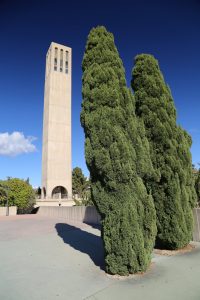 In additional to the the Coastal Walkway as mentioned above, we also enjoy hiking around the UCSB lagoon. For easy access to the lagoon take a left at the light just past the archway off of the 217 freeway. You will wind past the dorms on your right. Park in parking lot number 5. The trail to the lagoon is directly behind this lot. There are dirt hiking trails that wind around the top of the small cliffs over looking the ocean, the lagoon, and campus. From the trail, there are smaller trails winding down to secluded beaches. Often you will see surfers off of these beaches. Some of these beaches are only accessible when the tide is out, unless you don’t mind getting wet and fighting the never ending waves.
In additional to the the Coastal Walkway as mentioned above, we also enjoy hiking around the UCSB lagoon. For easy access to the lagoon take a left at the light just past the archway off of the 217 freeway. You will wind past the dorms on your right. Park in parking lot number 5. The trail to the lagoon is directly behind this lot. There are dirt hiking trails that wind around the top of the small cliffs over looking the ocean, the lagoon, and campus. From the trail, there are smaller trails winding down to secluded beaches. Often you will see surfers off of these beaches. Some of these beaches are only accessible when the tide is out, unless you don’t mind getting wet and fighting the never ending waves.
The UCSB lagoon is quite green, probably because of the algae growing in its waters. The crew team, and the Associated Students adventure organization use the lagoon for kayaking. There is a floating plastic dock that also extends out into the lagoon from the campus side of the lagoon. However, this dock is often frequented by sea gulls and other birds so the top can be quite messy. Shoes are recommended.
There are a few benches along this trail and we like to sit and watch the ocean and the surfers.
Note the blue “Tsunami” warning signs that went up after the huge Boxing Day Tsunami in SE Asia. On a clear day or even a somewhat clear day you can see the Channel Islands. There are three main islands; Santa Rosa and Santa Cruz are the largest, San Miguel, and then three small islands called Anacapa Islands. Whenever we have hiked this trail the weather has been warm and very calm. When you get your UCSB campus map you will see that there is a peninsula extending into the lagoon (during high tide).
Small trails wind out on this peninsula. During low tide this “peninsula” is no longer a peninsula as you can actually walk all the way back to campus on this stretch of land. We usually follow the trail around the lagoon and walk back through campus, by the University Center, back to the car.
Goleta Point
is near Campus Beach and the UCSB Marine Laboratory. This point of land ends and large flat rocks protrude above the ocean’s surface. When the tide is down it is fun to walk out on these rocks. Some of the rocks are separated from each other by channels of water. You can either jump from rock to rock, or else wait until the wave breaks and the water recedes and then quickly walk on the ocean floor and climb up on the rocks.
History
The campus itself has been in its present location since 1954 however, they joined the University of California college system 10 years previous to 1954. The college has 900 faculty members and over 18,000 students. The college is on 989 acres eight miles north west of Santa Barbara. Do not expect to find traditional Santa Barbara architecture at this college. The buildings are not designed like the Spanish architecture you see in many of Santa Barbara’s older buildings. Some buildings are square and the walls are concrete, the University Center is painted pastel colors, and the newer arts and humanities buildings is our favorite. It is a multi story building with appealing architecture and design.
UCSB is the only campus with a Chicano Studies Department, and also the first campus to establish programs in Environmental studies. There are 300 buildings on campus and eight national research centers. About half of UCSB’s academic programs are among the top twenty in the U.S. From most any place on campus you can see the 188 foot Storke Bell Tower. This tower is a campus landmark and houses student publications and the campus radio station, KCSB.
Tours
We have been to the campus of UCSB so many times that we could almost give campus tours. Tours are offered most weekdays between at 11am and at 2pm. The tours begin at the University Center and include an admission demonstration and a one hour walking tour of the campus. Reservations are required for groups of more then 10 people. Phone for recorded tour information is (805) 893-8175.
Note: There are more then 14,000 bikes used daily on this campus. Pedestrians should yield to the bicyclists when crossing the bike paths and use caution when doing so.
More Information
The daily UCSB paper is called the Daily Nexus. Visit: www.dailynexus.com
Visit the radio station website, KCSB: www.kcsb.org
UCSB has a fine bookstore ( www.ucsbstuff.com ) which covers two levels; the upper level contains an excellent selection of books, UCSB souvenirs, as well as other items of interest. The lower level contains student textbooks as well as computers and computer accessories.
WESTMONT COLLEGE
This college was founded in 1937 as the Bible Missionary Institute near downtown Los Angeles by Ruth Kerr, the owner and CEO of the Kerr Glass Manufacturing Company. Quickly running out of space they needed to find a new campus and located this property in Montecito – and moved their operations here in 1945.
Today it is a small Christian Liberal Arts College still nestled in the hills of Montecito on over 110 acres. Approximately 1,300 students attend at any given year. For more information, visit: www.westmont.edu

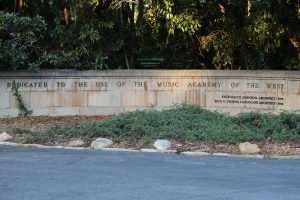

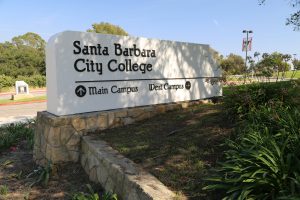
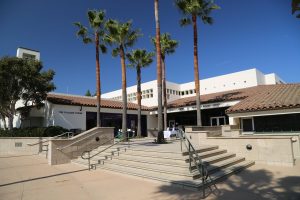
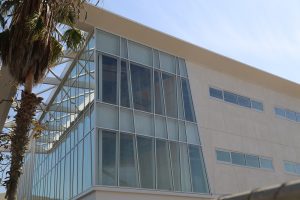
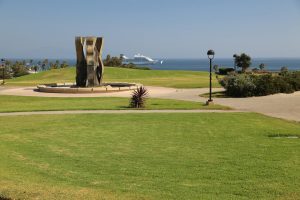

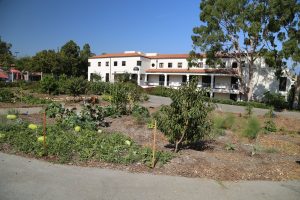

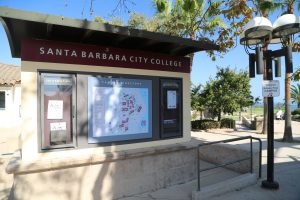

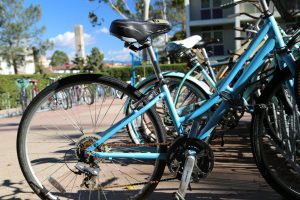

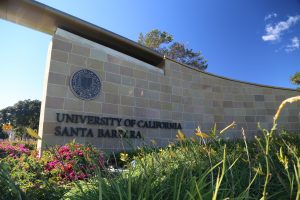

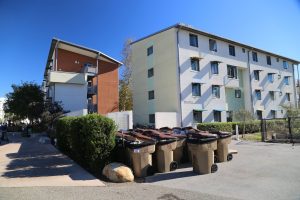


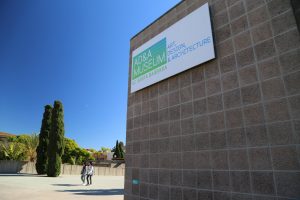
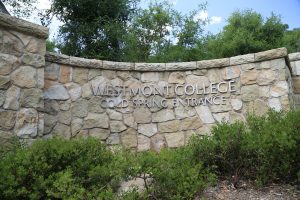
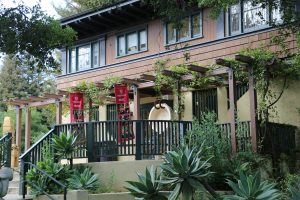
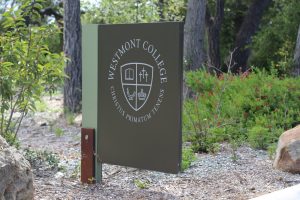

Leave a Reply